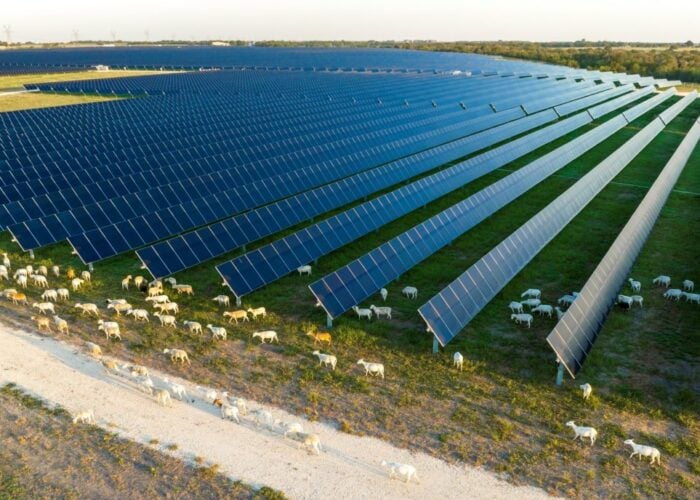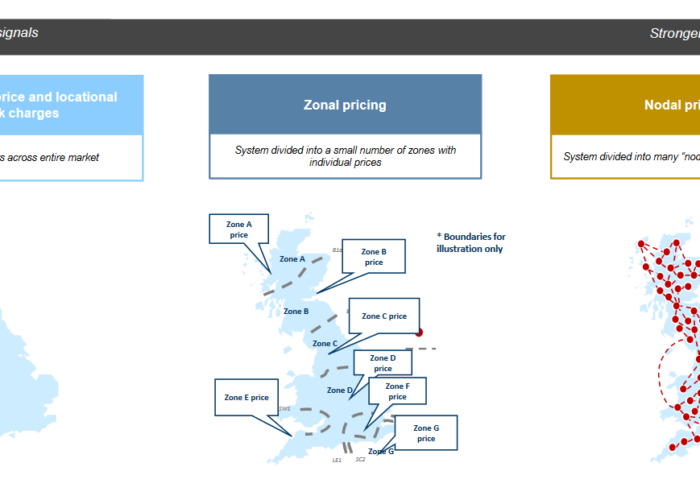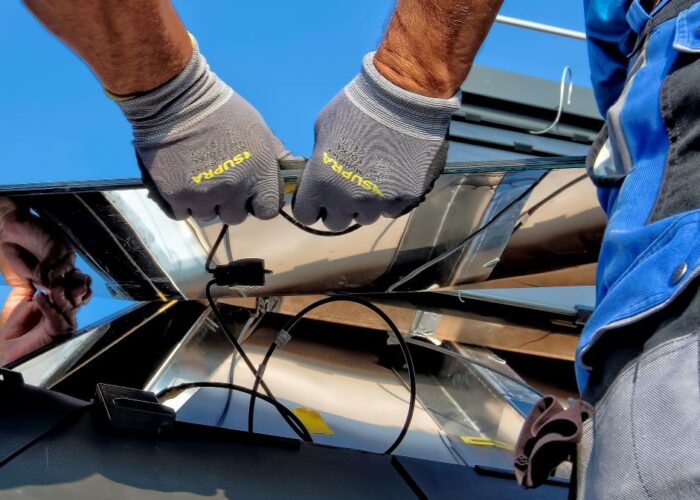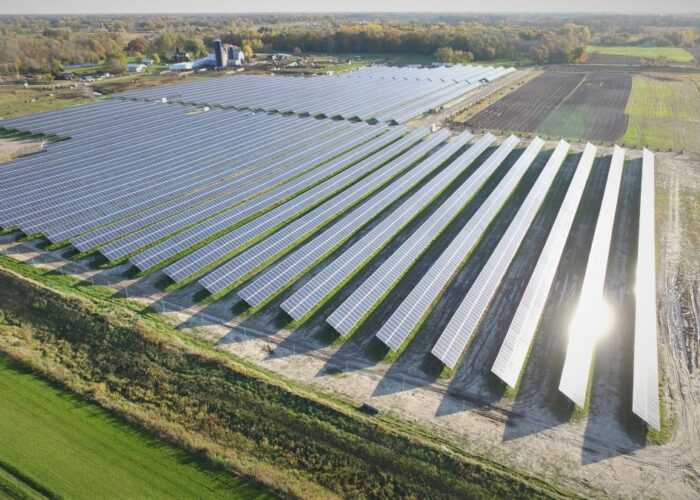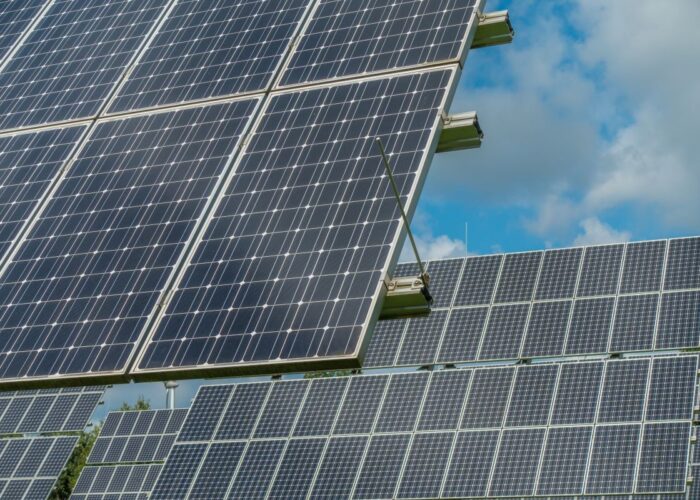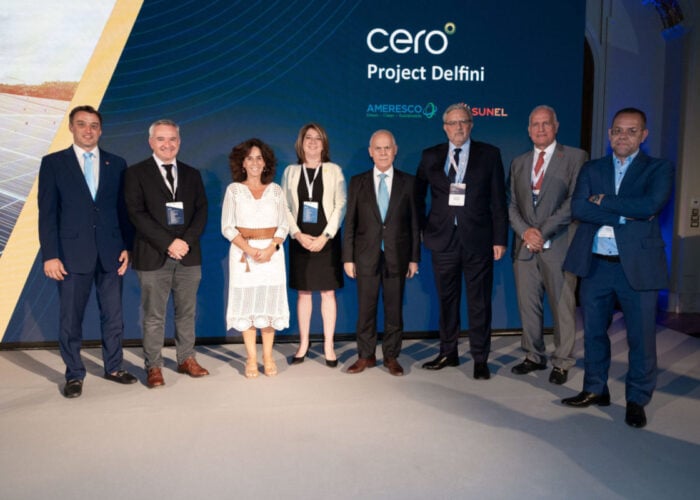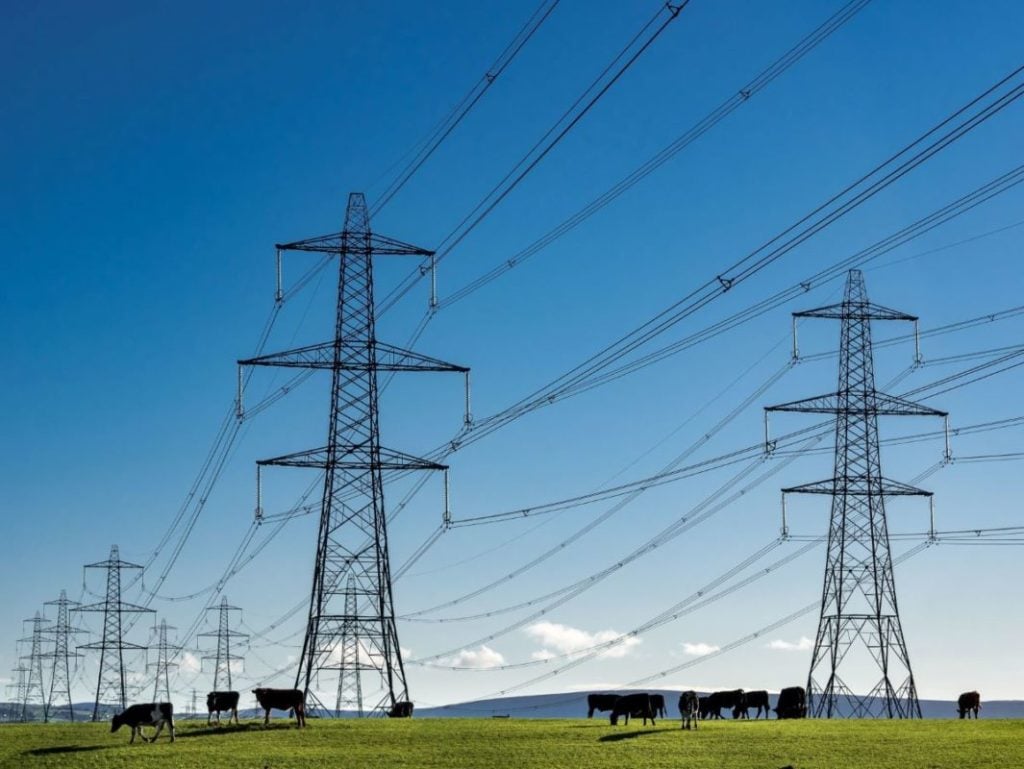
Senior Reporter George Heynes on the troubles the UK is facing as its electricity network is being adapted to accommodate multiple renewable energy sources.
One of the biggest bottlenecks impacting the transitioning UK energy sector is grid connectivity. The UK energy grid, which was first created in 1935 to transmit power from coal-powered plants around the country, must adapt to the era of renewable energy – and fast, if the UK wants to play a significant leadership role in the journey to net zero.
Unlock unlimited access for 12 whole months of distinctive global analysis
Photovoltaics International is now included.
- Regular insight and analysis of the industry’s biggest developments
- In-depth interviews with the industry’s leading figures
- Unlimited digital access to the PV Tech Power journal catalogue
- Unlimited digital access to the Photovoltaics International journal catalogue
- Access to more than 1,000 technical papers
- Discounts on Solar Media’s portfolio of events, in-person and virtual
National Grid Electricity System Operator (ESO) recently revealed the extent of the challenge facing the UK. The organisation stated in June 2023 that there were approximately 220 projects due to connect to the national transmission system before 2026, totalling circa 40GW and equating to more than double peak demand in the summer months for all of the UK.
Only half of these have secured planning consent at this stage, and some have had to move their connection dates back by over 14 years. With many developers facing connection dates well into the 2030s for their projects, this is the single main obstacle the UK is currently facing in its race to an emissions-free economy.
The scale of the issue at hand
Many renewable generation projects that could contribute great volumes towards the decarbonisation of the UK energy system are consistently being set back by grid connection delays.
This hinders the UK’s decarbonisation goals in a number of different ways. Perhaps one of the most obvious issues is that the renewable generation projects, which could grant UK households relief on energy bills amid the energy crisis, are unable to be connected to the grid for consumers to access.
Alongside this, many of the UK’s industry sectors are turning their attention to electrification in a bid to reduce emissions. This includes heat, transportation and other key sectors. National Grid estimated last year that electricity consumption in the UK and US would increase by approximately 50% by 2036 and more than double by 2050 as a result of increased electrification.
To cater for this, renewable generation projects must come online in the coming years to enable these technologies to be used to their full potential and contribute fully to decarbonisation. Not reaching these milestones will set the nation back significantly in the transition schedule towards net zero.
A prime example is the electric vehicle (EV) charging infrastructure. There is a critical need to scale up the infrastructure needed to rapidly increase adoption rates via access to EV charging. Without doing so, the UK will fall well short of its target of phasing out fossil-fuelled internal combustion engine (ICE) vehicle sales by 2030.
For the UK solar sector, grid connections are also a stumbling block, and it could derail the positive motions being put into play by the industry. To highlight the issue, the beginning of 2023 reached 300GW of projects seeking grid connection dates, leading to a ‘clogging’ of the Transmission Entry Capacity (TEC) register – a list of projects that hold contracts for grid connections. In comparison, there is approximately 80GW of total generation currently connected to the GB grid.
According to the Energy Networks Association (ENA), one of the main ways to solve grid connectivity woes is by scaling investment within grid infrastructure.
“Network operators will deliver £22.5 billion of investment over the next ve years to improve grid infrastructure and help ensure the UK’s energy systems can meet the demands of the net zero transition, including connecting renewable generation schemes large and small,” says a spokesperson from the ENA.
“To reach our net zero targets, we need more than just investment as other issues remain, particularly around planning and regulation. In order to more quickly connect more renewable generation, we need three things – a continued focus on innovation and flexibility, investment to enable network capacity in anticipation of future need, and a coordinated and accelerated planning system which brings together local and national ambitions.”
It is also important to note that renewable projects have surged in recent years – faster than many expected – thanks in large part to the continued drop in the cost of development. For example, between 2010 and 2019, the cost of solar PV globally dropped by 82%.
This has driven renewable developments in the UK, but in turn “distribution capacities have been hammered since around 2012 amid the big solar rush,” says Pete Aston, specialist connections engineer at Roadnight Taylor.
Demand for renewables has only been exacerbated over the last year amid the wider energy crisis, highlighting the growing need for network investment. Additionally, investment is not the only barrier to expansion, a further point highlighted by Aston.
“It’s easy to draw a line on a map and say let’s put a new transmission circuit there. But when it’s hundreds of kilometres long, they need development consent orders and government level planning permission. It’s probably five to ten years in the planning process, let alone building the thing,” he says.
Scaling investment will provide further opportunities for projects to acquire grid connections and create a booming renewable industry across the UK. This could be achieved by expanding the current transmission network to cater for this additional generation capacity. Early investment in particular could be beneficial for the development of the UK grid.
Commenting on this topic, Stewart Reid, head of future networks at Scottish and Southern Electricity Networks (SSEN) Distribution, says: “Through coordinated early investment, we will be able to keep costs down and develop our network to enable low carbon technologies, such as electric vehicles and heat pumps, to connect when they need to, more swiftly than if new connections were dependent upon network reinforcement.
“We are developing a stakeholder-led investment strategy to deliver a coordinated, efficient and cost-effective network for our customers, consumers and stakeholders.”
Another crucial area that could be bolstered via early investment is supply chains whilst it could also help reduce the costs associated with the development of projects. This could improve investor confidence and speed up the creation of the projects.
“Early investment can also help drive efficiencies and potentially reduce costs for future consumers. By avoiding an incremental approach to network investment, we can plan effectively with our supply chain, driving costs down and releasing investment at pace. This is particularly important in the current environment, with rising costs of materials and significant pressure on the supply chain resulting from the drive to net zero not only in the UK, but across Europe and beyond,” added Reid.
The backlog of generation projects
One of the biggest issues plaguing grid connections is the backlog of projects to join the grid. The backlog of projects at the start of 2023 reached 300GW and must be addressed. But how has the UK found itself in this situation?
Because of the nature of the TEC register application process, the register has many projects that have not entered any concrete development. This comes at the expense of others that are further along in development who are being situated further down the register with connection dates well into the 2030s.
“Ofgem does not allow network companies to discriminate between projects seeking a connection whereby connectees are treated on a first-come, first-served basis, with any required network upgrades only progressed when connections are formally agreed,” the ENA says.
This is a problem for the industry, because as renewable generation projects continue to be added to the TEC register, it will continue to become more congested. This highlights the urgency in needing to solve the grid connection conundrum immediately with new projects expected to become larger and more frequent as net zero targets loom larger.
“Network companies are taking steps to speed up connection times; they are offering generators flexible contracts, digitalising the connections process and managing the queuing process more efficiently for connecting customers,” says the ENA.
National Grid ESO has launched various initiatives aiming to solve this great grid connection conundrum. The first of these was ESO’s five-point plan, released in May 2023, outlining plans to speed up electricity grid connections for 70% of projects due to connect after 2026 by two to ten years.
Central to this plan is to not only to free up space for both solar and wind generation – but also energy storage projects that are widely touted as a complementary technology to intermittent generation.
ESO said that its five-point plan would speed up connections for 95GW of energy storage projects in the pipeline, and that they will also be reviewing contracts to make sure parties looking to connect to the grid in the next two to three years are on track to meet their connection dates.
This initiative enables companies to leave the grid connection queue without incurring penalties – something that traditionally would happen. The ESO said there were 8GW of projects interested in this, and that it was now in the process of approving these contract terminations.
Allowing generation projects to leave could be vitally important for the wider industry and reduce connection times. Removing the projects from the TEC register could provide additional capacity for other projects, which are more likely to be energised faster, to be advanced.
How does technology negate the need for network upgrades?
One area where allocating investment could be effective is into technologies that can help negate the need for the vast sums of capital required for network upgrades. ENA highlights that the utilisation of flexibility markets is helping to “unlock capacity” and thus further technological enhancements could help reduce connection delays.
“Network operators are applying an innovative approach to addressing constraints. They are using new technologies such as our world-leading flexibility markets to quickly unlock capacity, with the least disruption and cost to the consumer. Networks are also introducing new and innovative connection design solutions where one physical connection can accommodate multiple customers,” says the ENA.
Harnessing flexibility markets is a useful tool to ensure that network upgrades can be made without jeopardising the flow of electricity. Alex Howard from distribution network operator (DNO) UK Power Networks touches on this topic.
“Since our first tender, we have awarded more than 850MW of flexibility contracts across more than 200 zones. The primary use of this has been to defer needs to upgrade the network,” Howard says.
“This experience of procuring and dispatching flexibility provided the learning and confidence to make flexibility a central part of our latest business plan (covering 2023-28) – deferring more than £400 million of new infrastructure that we would otherwise expect to be required. We are currently running our biggest flexibility procurement to date – seeking more than 500MW across more than 1,000 zones.”
Paul Glendinning, director of policy and markets at Northern Powergrid, also addresses the potential use of network flexibility.
“Understanding what is happening out on the network unlocks opportunities for flexibility – that is why network monitoring is so important,” Glendinning says.
“Our flexibility-first approach to investing in our network is based on the principles of monitor, manage, reinforce. We are able to leverage information from monitoring out on our network to understand what is happening.
“This then enables us to manage the network by deploying network flexibility (such as active network management to release capacity when it is needed) or customer flexibility through incentivising customers to increase or reduce electricity use or production, or flexible connection arrangements.”
UK Power Networks has been exploring how technology could help negate the need to scale grid connection investment. Howard highlights that “data and technology have been key to our success to date”.
“We have developed a world-class Distributed Energy Resource Management System (DERMS), which enables us to monitor constraints in our network in real-time. It means we can offer highly accurate flexible connections and manage the available capacity on our network in an intelligent way,” Howard says.
“We have built an unrivalled picture of what is happening on our low voltage network thanks to our ongoing investment in Low Voltage visibility and drawing on data from a wide range of sources. This means we have a really granular understanding of network utilisation, enabling us to fast-track connections applications where we know there is spare capacity.
“We also use a software platform called Piclo to advertise our flexibility requirements and allow flexibility providers to record their capabilities and pricing. We plan to extend this ‘market platform’ capability – focusing on better user experience, more automation and greater use of APIs to ensure flexibility works seamlessly for the whole energy system.”
Grid connection conclusion
As shown throughout this article, it is crucial for the UK to collaborate to solve the grid connection delays plaguing the UK energy system. Although DNOs and industry players are exploring their own means to support the system, it is obvious that investment will be one of the biggest factors in solving the issue.
But what is clear to see is that all industry players and government are working together to bring fresh ideas to the table. Some of these may need accelerating if the UK is to achieve its decarbonisation targets and bolster its renewable fleet to also ensure its energy security.
This is also an everchanging area for the energy industry with new measures being introduced in quick succession, and as we approach 2030, it is anticipated that the spotlight in UK will truly be on the national grid.

